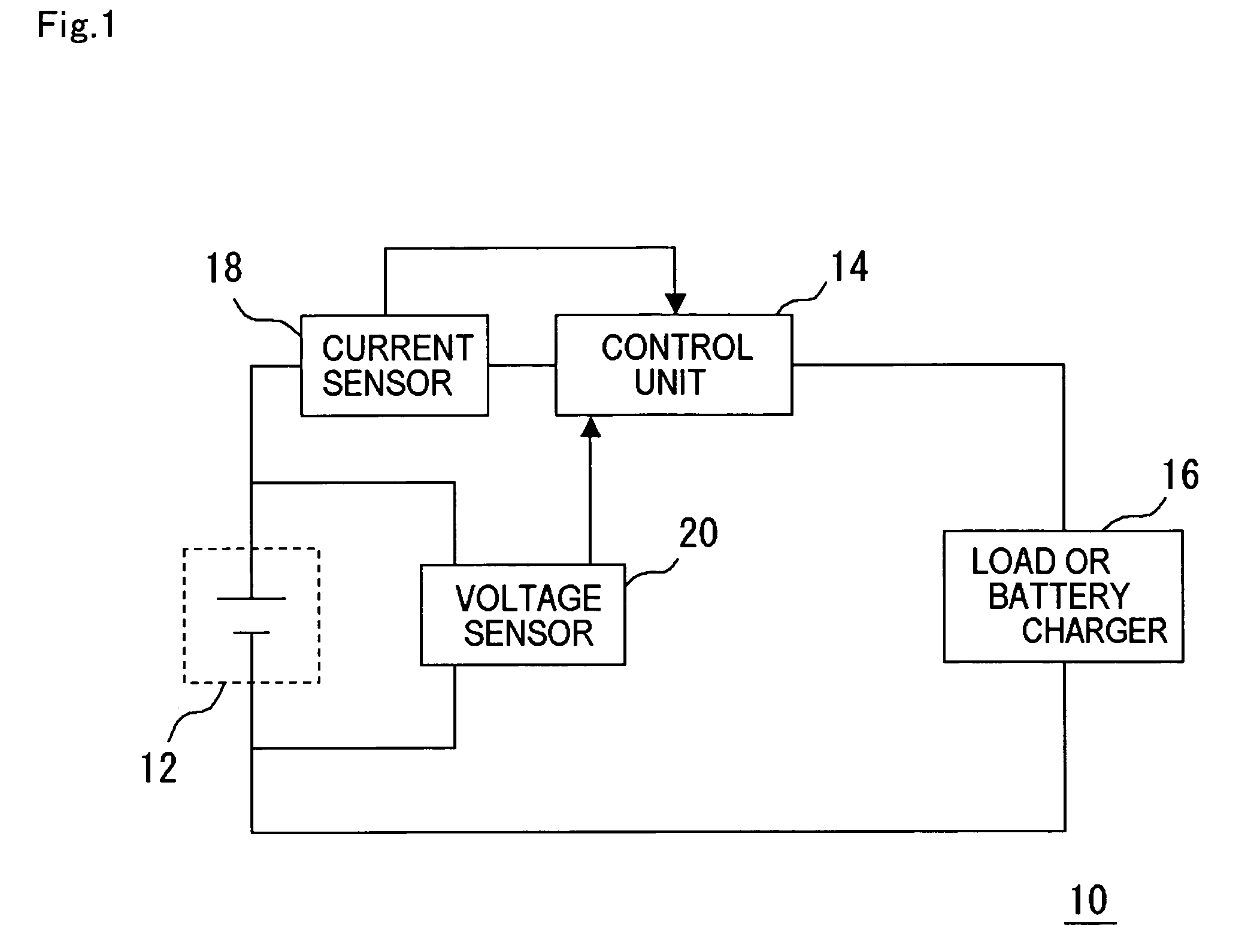Lithium ion secondary battery system, and method for operating lithium ion secondary battery
a secondary battery and lithium ion technology, applied in the direction of secondary battery servicing/maintenance, cell components, electric devices, etc., can solve the problems of reducing the moving speed of lithium ion and small dischargeable real capacity, and achieve the effect of suppressing the decrease of restrainting the effective capacity of the lithium ion secondary battery
- Summary
- Abstract
- Description
- Claims
- Application Information
AI Technical Summary
Benefits of technology
Problems solved by technology
Method used
Image
Examples
embodiment example
Embodiment Example 1
[0055] Here, the lithium ion secondary battery was manufactured with positive electrode materials of 4V class.
[0056] First, the negative electrode body was formed in such a way as to apply amorphous carbons to both faces of a copper foil sheet (thickness approximately 15 μm) with a thickness of approximately 50 μm while using the amorphous carbon as the negative active material. It should be noted that, as for the amorphous carbon, Carbotron P (registered trademark) produced by KUREHA CHEMICAL INDUSTRY CO. LTD was used. As for the positive active material, lithium-manganese composite oxides were used; and the positive electrode body was formed in such a way as to apply the lithium-manganese composite oxides to both faces of an aluminum foil sheet (thickness approximately 20 μm) with a thickness of approximately 70 μm. Next, the negative electrode body and the positive electrode body were placed to face each other in such a way that there was no electrical conta...
embodiment example 2
[0059] Similar to the embodiment example 1, the lithium ion secondary battery was manufactured. With the lithium ion secondary battery, the intermittent discharging (repeated execution of 1 sec discharging and 1 sec pause) and the continuous discharging were carried out, with the discharge rate of 25C, and the dischargeable periods until the voltage reached the end voltage (2.5V) were measured. Then, the effective capacity in each case was calculated. The result thereof is shown in TABLE 2. In TABLE 2, the effective capacity magnification obtained by dividing the effective capacity of the intermittent discharge by the effective capacity of the continuous discharge is also shown.
TABLE 2EFFECTIVEEFFECTIVECAPACITYCAPACITYOFOFDIS-INTERMITTENTCONTINUOUSEFFECTIVECHARGEDISCHARGEDISCHARGECAPACITYRATE(Ah)(Ah)MAGNIFICATION25 C0.640.282.30
[0060] As shown above, it is shown that the effective capacity magnification increases by carrying out the intermittent discharging in the case where the d...
embodiment example 3
[0061] Here, a lithium ion secondary battery was manufactured with positive electrode materials of 5V class. The lithium ion secondary battery was obtained with the same producing method as the embodiment example 1, other than using LiNi0.5Mn1.5O4 as the positive active material. With the lithium ion secondary battery manufactured as above, the intermittent discharging (repeated execution of 10 sec discharging and 0.8 sec pause), and the continuous discharging, both with the discharge rate of 20C, were carried out, and the discharge periods until the voltage reached the end voltage (2.5V) were measured. Then, the effective capacity in each case was calculated. The result thereof is shown in TABLE 3. TABLE 3 also shows effective capacity magnification obtained by dividing the effective capacity of the intermittent discharge by the effective capacity of the continuous discharge.
TABLE 3EFFECTIVEEFFECTIVECAPACITYCAPACITYOFOFDIS-INTERMITTENTCONTINUOUSEFFECTIVECHARGEDISCHARGEDISCHARGECA...
PUM
 Login to View More
Login to View More Abstract
Description
Claims
Application Information
 Login to View More
Login to View More - R&D
- Intellectual Property
- Life Sciences
- Materials
- Tech Scout
- Unparalleled Data Quality
- Higher Quality Content
- 60% Fewer Hallucinations
Browse by: Latest US Patents, China's latest patents, Technical Efficacy Thesaurus, Application Domain, Technology Topic, Popular Technical Reports.
© 2025 PatSnap. All rights reserved.Legal|Privacy policy|Modern Slavery Act Transparency Statement|Sitemap|About US| Contact US: help@patsnap.com



